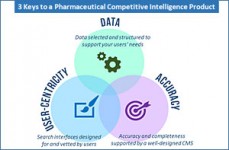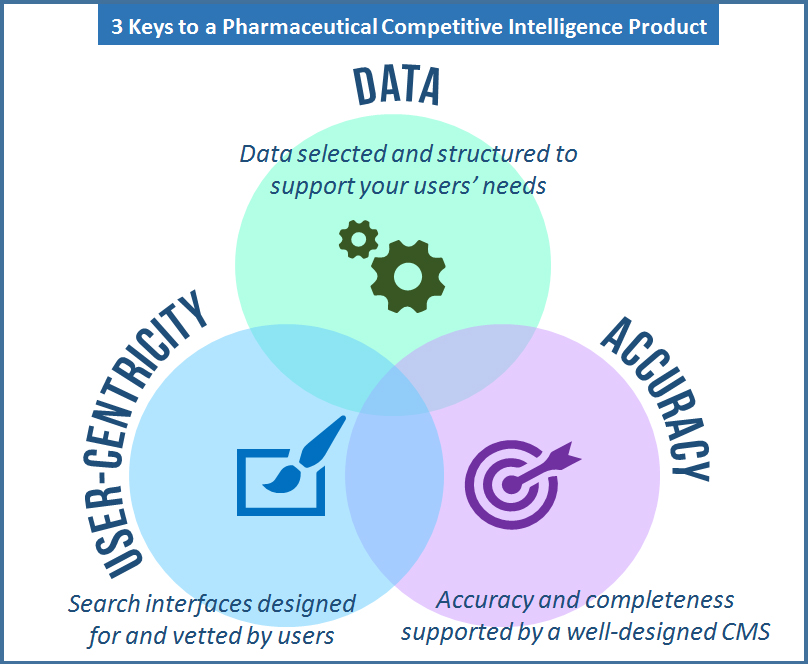 onkar@producthubhob.com
onkar@producthubhob.com
 0044-(0)7837282370
0044-(0)7837282370
 onkar@producthubhob.com
onkar@producthubhob.com
 0044-(0)7837282370
0044-(0)7837282370

3 Keys to a Pharmaceutical Competitive Intelligence Product
Written By: Brian Bialkowski
Date: 20 Jun, 2016
The landscape of competitive intelligence tools is crowded in the life sciences industry. Niche players keep appearing, but a handful of major players dominate with an "all-in-one" approach to coverage, whether in a single product or a suite.
Today, it’s harder than ever to lay claim to truly original content in a fairly commoditized space. At the same time, such data-driven products continue to deliver value to customers and, just as importantly, offer attractive economies of scale and a foundation for lucrative consulting and service offerings. So, whether you're an upstart looking to break into the space or an established player looking for an edge, what's important?

First comes your foundation: your data. Or, more specifically, your choice of what you collect and how. Your decisions here will later inform product design and how you support it, and ultimately will help decide exactly what your users can and cannot do.
It’s tempting here to paint with broad strokes: “We’ll track drug information!” But for every object and attribute, hard questions must be asked: Will a given data point be used for search and analysis? If so, is there controlled terminology? A hierarchy? And, most important of all, which data points relate to one another, and how will clients need and expect to search through those relations?
Answering such questions requires a deep understanding of your user personas. Not enough nuance and you will launch quickly but limit future growth. Too much coverage and normalization, on the other hand, may add complexity to every future stage, slow you down, and complicate the experience for your users.
I'm sorry to add an obvious point, but if you're in the information business, accuracy trumps all. If a user finds you have missed a piece of information or, much worse, published an error, your credibility is shot.
You can avoid many issues through clear standard operating procedures (SOPs) for gathering and curating your data. However, errors often begin with flaws in the content management system (CMS) that could have been avoided by a deeper consideration of the needs of the users curating it.
That CMS pumps the blood that keeps your product alive. Poorly designed, it will weaken your product and even doom it to a slow death. That’s not to say you should over-engineer it; like any other application, too many features may intimidate users rather than empower them. But, you should think through it just as extensively as the product you intend to sell. Otherwise, the errors will multiply and fundamentally weaken your offering.
You have the right data, and the right tool to manage it. You're all set, right? Wrong. If your application takes an advanced degree to operate, you have a gigantic problem.
The search interface is usually the single greatest pain point in any competitive intelligence product. As products have added more data, they have crammed more options into the screen, resulting in crowded, bloated interfaces that nobody likes, even if they need them.
To avoid this pitfall, incorporate a user-centric approach when designing your product: design not for the abstract possibilities of your data, but for your users’ behavior, and then validate your choices with actual users. This may result in several iterations and regular review with focus groups, but it will pay off when you launch the product that is easy and, dare I say it, enjoyable to use.
I’ll tackle some strategies around each of these in future posts, but for now let me know what you think is important when building a competitive intelligence (CI) product; or, tell me about your biggest challenges when using the options on the market today.

HOW WILL WE WORK WITH YOU?

2 Hour Workshop
We come prepared to draw a blueprint of your product idea in a couple of hours

Solution Proposal
Based on your needs, we propose a tailored solution covering a mix of: Discover, Design, Define & Deliver phases

Start Project
Our team starts to work on your product as per the proposal
